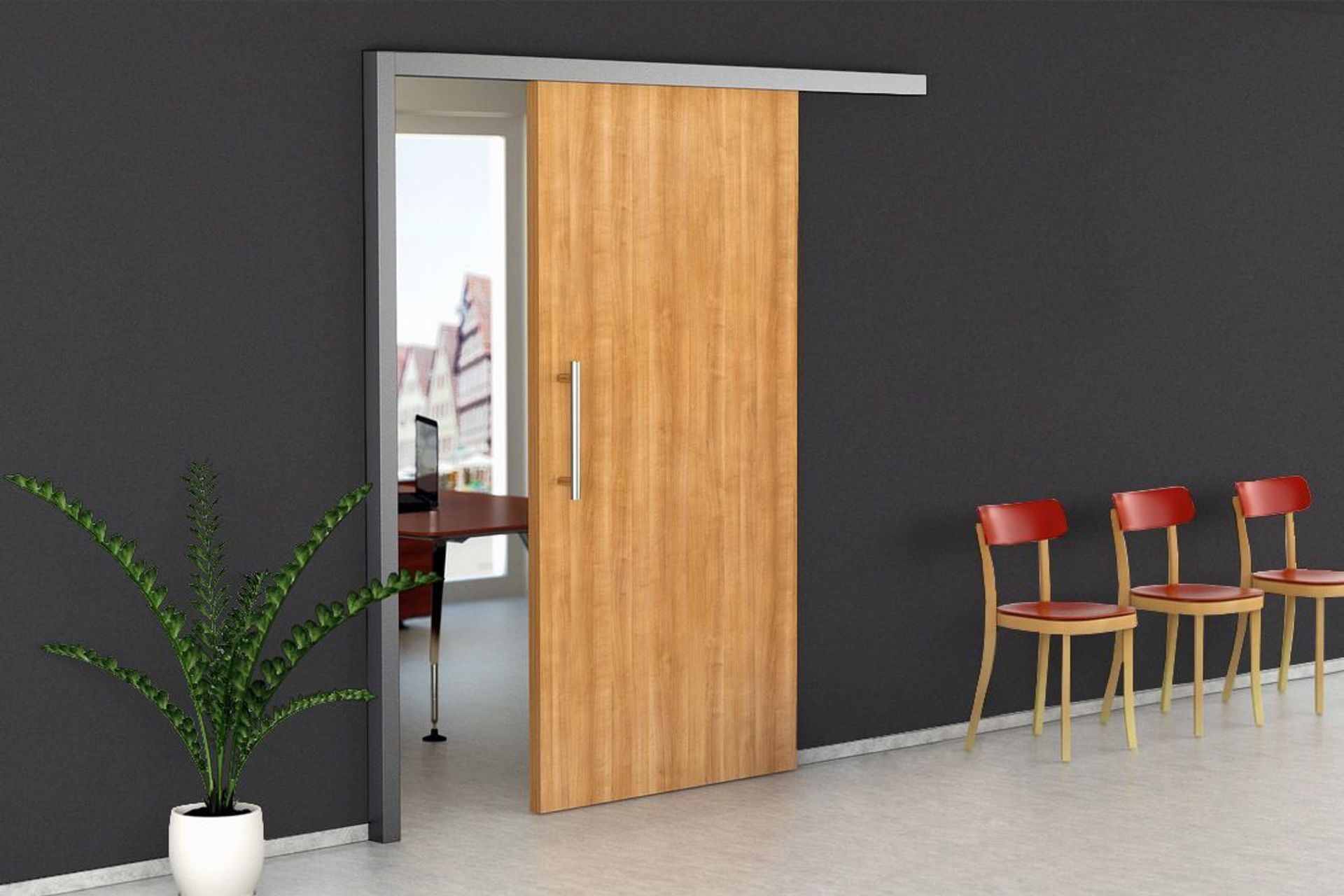Sound control: how to protect your home from noise pollution
Written by
25 June 2020
•
8 min read

There's something intangibly valuable about the peace and quiet we're afforded in our own homes. As one of the few places in the world we have near complete control over, it can be incredibly frustrating when sound from outside so easily invades and punctures the ambiance.
Noise pollution isn't limited to a disruptive racket invading your home from the outside like an uninvited houseguest though; a tumbling washing machine, a rangehood or a stereo can all contribute to an uncomfortable level of internal noise.
With some thoughtful acoustic design and product choices, however, you can significantly limit the amount of noise that enters your home, as well as how much spreads throughout it from within.
Why control sound?
Building to control sound is important for both the people who will be living in the home to enjoy it, but also for any neighbours who desire a certain level of quiet too.
Anyone who has lived near a motorway, a factory or a train station can attest to how disruptive to everyday life too much noise coming in from outside can be. But it's not just the workings of the wider world that can make themselves heard; things like the sounds of heavy-footed neighbours clomping through their apartment above can also become a frustrating regularity.
Not only can high levels of ambient sound damage hearing over time, it can cause stress in the short term, make it more difficult to sleep, and just generally make living in a home a little less enjoyable.
"Excessive" noise is prohibited under the Resource Management Act, and property owners need to take steps to ensure any sound coming from their property doesn't reach "unreasonable" levels. Those terms are open ended enough to ensure that neighbourhood peace can be kept, and that home builders and designers are encouraged to do what they can to minimise sound pollution from new properties.
If you do play a loud instrument, or you enjoy throwing parties and entertaining guests, a soundproof home can help you continue living the way you enjoy without being disruptive to others.

First principles: start limiting sound at the source
A key principle around controlling noise pollution is to limit the sound at the source. For sounds coming from outside your property, this means doing what you can at its edges to attenuate the sound as much as possible.
By reducing and abating sound here first, minimising any residual noise that comes through becomes easier to manage.
If the majority of the sound is coming from one direction—a train station next to your property, for instance—then it's often a good idea to focus most of your resources towards placing something between the source and your home.
Thick barriers like masonry walls can do a lot to limit direct sound transmission from sources below or at the same level as the barrier, but won't do anything to stop sounds that come from above. Lighter materials like timber fences will have some effect, but not nearly as much as those with a lot of mass.
If your property allows for it, you can also landscape an earth mound to do a similar job, but again, it won't help for higher sounds like planes flying overhead.
Fences and barriers can also provide protection for your neighbours, minimising sounds that come from your property too.
Building a sound attenuating exterior
The external facade of the home is the next line of defence from unwanted external noise pollution.
If there is one side of the house that's close to the sound source, the best performing wall from an acoustic perspective will be one with heavy construction and no windows or doors- both of which are many times less effective at reducing sound transmission and can act as chinks in the armour. If doors and windows are needed, it's best that the former are solid and have seals on the frame and the latter are non-opening and have laminated glass panels.
Different framing and cladding choices will require different solutions for making the walls soundproof, but in general the more mass the better, as well as lots of fibre insulation in the walls.
Roofs are a little more difficult to build as acoustically resistant as walls, but it's still possible to reduce sound that comes in from above. Bitumen underlay underneath metal sheeting, for example, along with fibre insulation, an acoustic internal ceiling and other sound-absorbing materials used can provide an effective solution for most needs.
A sound-resistant exterior is also going to stop much of the sound you generate inside from escaping to your neighbours—with a well soundproofed exterior, you can more or less be as loud as you want.
Design the home to minimise disruption of internal sounds
Limiting noise pollution doesn't end with the exterior walls. The layout of the rooms within the house can also be planned to minimise sound in the places where quiet is desired—bedrooms, for example—by placing any 'loud' rooms together in a different space in the house. As an extreme example, it's probably not wise to have a kids' bedroom on the opposite side of the lounge where there might be entertaining or loud music playing once children are in bed.
This obviously depends on the size of the house, but separating those 'loud' and 'quiet' spaces as much as possible within the home can make a lot of difference to the perception of how loud the home is.
It's also good practice to orient the house with quiet areas furthest away from external noises. If you're next to a motorway or train station, you can take the same approach you have internally with respect to loud rooms and quiet rooms, and place the collection of loud rooms closest to the source of external noise.
For one, external noise in an area that's often loud like the kitchen might not be all that bothersome—if one room inescapably has to be closest to the external noise, it might as well be the one where it will be least disruptive.
The other benefit of this is that the quiet rooms that are oriented as far from the external noise as possible have the rest of the house between them and the offending outside sounds, which can greatly diminish their potency.
Another layout trick is to offset windows and doors as much as possible to minimise lines of sight and therefore unimpeded travel paths for sound. Just imagine if when all the doors in your home were open and you could see from one side of the house to the other—this would be a corridor for sound that would allow noise to spread much more efficiently through the home.
With offset openings, the clean travel of sound is interrupted, and while this alone won't stop sound pollution in its tracks, it can certainly dampen a lot of the energy, forcing it to hit surfaces where it can be absorbed and diminished.
How can interior elements reduce noise pollution?
Beyond the exterior construction and the internal layout of the rooms, there is yet further work you can do to attenuate internal noise, and that's by choosing furniture, fittings and flooring that limit sound reverberation.
Carpet is perhaps the most effective flooring option for minimising the way sound reverberates around the room. Not only do footsteps become much more muted than they would be on hard-surfaced floors, the carpet—or more importantly, the underlay—acts as a kind of giant absorbing sponge for sound that covers an entire surface of a room.
Anything from airborne sounds, to the noise a dining table chair makes when it's moved can be greatly diminished on a carpeted floor. It's particularly effective too if you're living above another unit, as it can limit the amount of noise they hear from below.
That said, choosing harder flooring like wood or laminate is not an inevitable loud-home sentence. With the right underlay, such as cork, some of the noiser effects of less spongy flooring can be mitigated.
The furnishings you place in a room also play a role in absorbing sound. A big couch with a large soft surface area will, like carpet, dampen some of the reverberations that otherwise would bounce around the space.
If you still find your room is still too acoustically active for your liking, there are many specially designed acoustic products, such as wall panels, that can absorb even more of the sound that might be bouncing around.
Appliances with low operating volumes, or even steps as simple as putting rubber pads on the bottom of items that might rattle can remove lots of the unnecessary sounds being generated in the normal operations of your home.
You can also find products that insulate the noise from your plumbing, which can sometimes be surprisingly loud if pipes are running through walls in quiet areas.
To get started designing your acoustically treated home, get in touch with an architecture and design professional.

